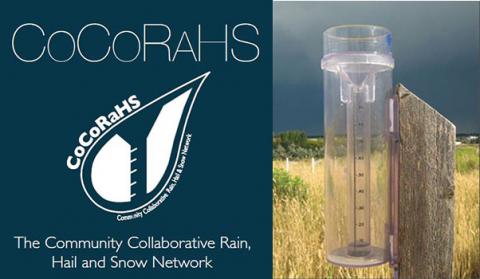
The National Weather Service in Charleston, SC currently has nearly 250 active CoCoRaHS observers! As you can see from the map below, we are in need of observers in several counties, particularly across southeast Georgia. Sign up to become a volunteer weather observer here: Join CoCoRaHS! If you have any questions about the program, contact Emily McGraw.
CoCoRaHS (Community Collaborative Rain, Hail and Snow Network) is a non-profit, community-based network of volunteers of all ages and backgrounds working together to measure and map precipitation (rain, hail and snow). The network originated with the Colorado Climate Center at Colorado State University in 1998, thanks in part to the Fort Collins flood a year prior. CoCoRaHS has over 20,000 active volunteers across the United States, Canada, Puerto Rico, U.S. Virgin Islands and Bahamas. For a quick overview of the program, check out this short introduction video.
Volunteers take daily rainfall measurements in their backyard and then report the observation online.
Who Can Participate?
This is a community project. Everyone can help - young, old, and in-between. The only requirements are an enthusiasm for watching and reporting weather conditions and a desire to learn more about how weather can affect and impact our lives.
Public, private and home schools are also joining! Learn about the "CoCoRaHS for Schools" program.
CoCoRaHS data is used by a wide variety of organizations and individuals. The National Weather Service, other meteorologists, hydrologists, emergency managers, city utilities (water supply, water conservation, storm water), insurance adjusters, USDA, engineers, mosquito control, ranchers and farmers, outdoor & recreation interests, teachers, students, and neighbors in the community are just some examples.
One of the neat things about participating in this network is coming away with the feeling that you have made an important contribution that helps others. By providing your daily observation, you help to fill in a piece of the weather puzzle that affects many across your area in one way or another. The more observations, the better as amounts can vary significantly over small distances. An added bonus - your observations get archived in the official climate record!